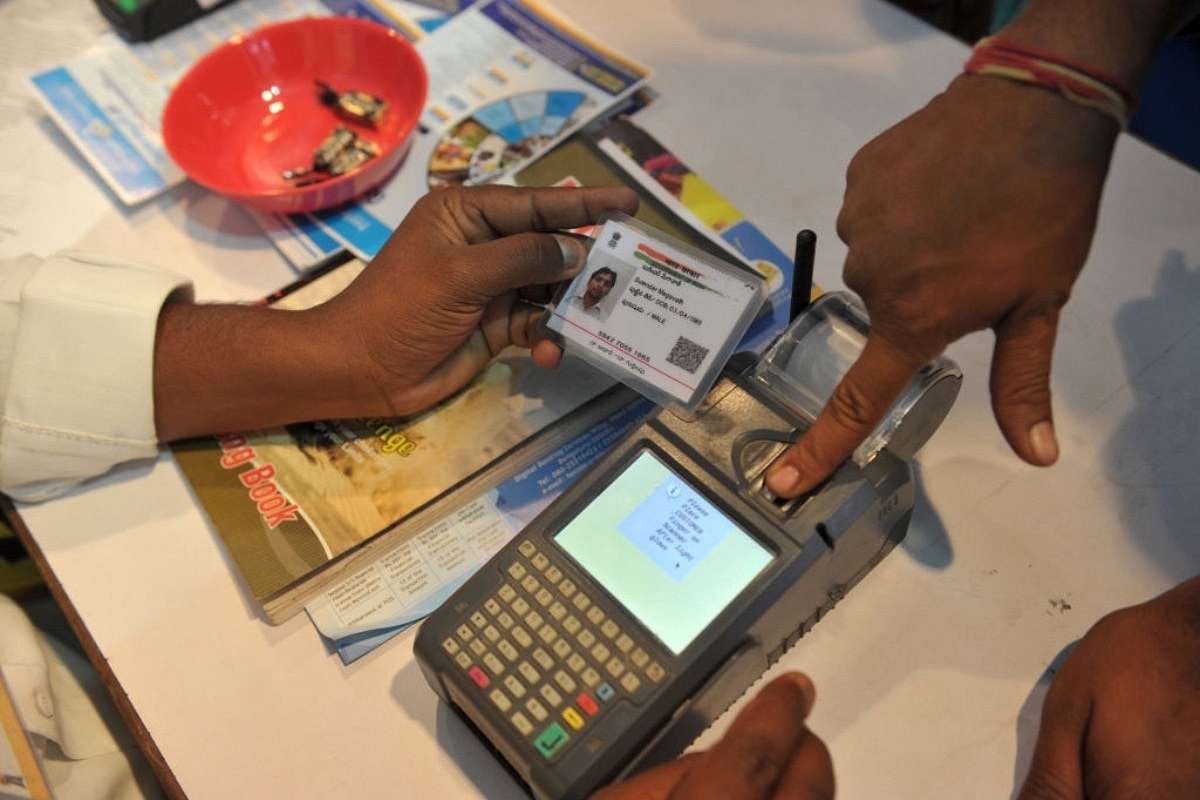Business
JAM Trinity: IMF Hails India’s Direct Cash Transfer Scheme For Its Scale and Efficiency

Representative Image (NOAH SEELAM/AFP/Getty Images)
The world is now waking up to the sheer scale and success of the Jan Dhan-Aadhar-Mobile trinity.
During one of the briefings, the International Monetary Fund (IMF) deputy director for fiscal affairs stated that there was much to learn from India.
Speaking about the direct cash transfers, he added despite the size and scale of the country, it was a logistical marvel given how programmes, meant to aid millions of people at low-income levels, were working, and how it was impressive.
Direct cash transfers meant to specifically target women, farmers, and the elderly were also pointed out.
The backbone of the entire cash-transfer programme, Aadhar, was also hailed, as the director hailed India’s unique identification system.
The IMF, in its latest report, projects India as an outlier, growing at 6.8 per cent in 2022 as other economies contract.
A significant application of Aadhaar, in the first tenure of the Modi government, was of enabling people to open their Jan Dhan accounts. For decades, more than 800 million people in the rural areas of our country were alienated from the financial system.
This left them at the mercy of moneylenders in villages and towns who extorted money at exorbitant interest rates, hindering their social development in the process.
By December 2014, in the early months of the Modi regime, over a hundred million bank accounts had been seeded with respective Aadhaar card holders.
Enabling efficient beneficiary identification for the government, Jan Dhan accounts plugged the leakages that used to occur in subsidy transfers to people.
The Jan Dhan Yojana, mocked by Congress during its launch, with over 450 million beneficiaries, more than Rs 1.67 lakh crore in deposits, and over 310 million RuPay cards issued today has been an enabler for digital payments.
The JAM trinity, today, has become the backbone of India’s digital economy. Couple this with the adoption of UPI, the account aggregator framework to ease access to credit, and the upcoming ONDC (Open Network for Digital Commerce) model and one has a booming economy with prospects for every Indian, from the ones wanting to run a fruit juice corner to ones running startups.
Introducing ElectionsHQ + 50 Ground Reports Project
The 2024 elections might seem easy to guess, but there are some important questions that shouldn't be missed.
Do freebies still sway voters? Do people prioritise infrastructure when voting? How will Punjab vote?
The answers to these questions provide great insights into where we, as a country, are headed in the years to come.
Swarajya is starting a project with an aim to do 50 solid ground stories and a smart commentary service on WhatsApp, a one-of-a-kind. We'd love your support during this election season.
Click below to contribute.
Latest